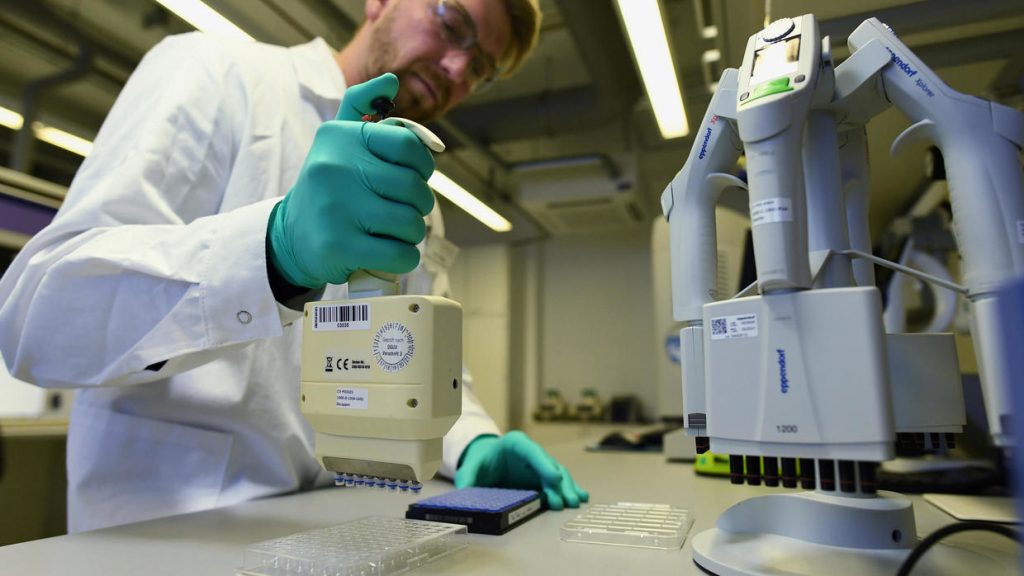Up to 66% of a populace needs invulnerability, through contamination or vaccines, to stop COVID-19.
As the apparatuses of the cutting edge world crush to a close to stop, one inquiry is likely on the brain of many: When will the coronavirus pandemic — and social removing — end? Nobody knows without a doubt, yet it's most likely no time soon. This is what we do think about when it might be protected to leave our homes and resume typical life.
It will almost certainly take herd immunity to end the pandemic. Most specialists state we're past the purpose of containing the infection, as we did with SARS and MERS. That implies that COVID-19 is digging in for the long haul, and the pandemic will end just with group invulnerability.
Crowd resistance portrays what extent of a populace must be safe to a sickness for the populace in general to be shielded from flare-ups. The specific edge relies upon the irresistibleness of the sickness, spoke to by the fundamental proliferation number, called R0 (articulated "R nothing").
At the point when another infection develops, nobody is insusceptible. A profoundly transmissible infection, similar to the coronavirus behind the present pandemic, can fan out quickly, rapidly consuming the dry fuel of an absolutely gullible populace. Yet, when enough individuals are safe, the infection runs into dividers of resistance, and the pandemic diminishes as opposed to seething ahead. Researchers call that the crowd resistance edge.
Viable vaccine

The subsequent situation is viewed as the most likely choice to kill the ailment for good. Researchers are working dangerously fast to create antiviral medications or a vaccine. From mRNA vaccines, which don't acquaint any infection with the subjects and comprise no popular hazard, to immune response tests to distinguish powerhouses inside to battle the infection, there are many promising advancements.
The issue with this methodology is it is, lamentably, very tedious and costly. It despite everything could be a year or more before such vaccines pass the fundamental security and adequacy tests in clinical preliminaries. Speculation costs for immunization are likewise evaluated to cost as much as $800 million.
Now and again, a surged vaccine that hasn't experienced the standard convention and stages that require protracted testing on creatures before human preliminaries could wind up making individuals more broken down as opposed to forestalling contaminations.
Studies have recommended that coronavirus vaccines could cause insusceptible improvement, which prompts the vaccinated individual building up a significantly more extreme type of the malady, rather than securing against the contamination. Harmfulness and reactions likewise stay a significant concern.
Social distancing lessens passings however postpones group insusceptibility. The fundamental flipside of effective social separating is that accomplishing group resistance gets deferred as cases decline, says Michael Mina, a disease transmission specialist at Harvard University's T.H. Chan School of Public Health in Boston. Regardless of whether all things considered we forestall a flood in the coming weeks, he says, the infection could reappear as soon limitations are lifted. "Without powerful crowd invulnerability at the populace level, we have some danger of a second flood of the pestilence," Mina says.
Social separating should last 1 to 3 months at least, possibly more. Society could keep a top on such a resurgence by keeping up wide social removing. The Trump organization on March 16 called for noteworthy social separating for at any rate the accompanying 15 days. Be that as it may, most specialists expect such estimates should be set up in the United States for one to a quarter of a year, at least, to shield medical clinics from being overpowered.
We could get a major break if the infection's spread eases back with hotter climate, however so far there's no sign that will occur. "That would be an extraordinary fortunate turn of events," says Maciej Boni, a disease transmission specialist at Penn State University, and may permit more individuals to come back to work once the quantity of new cases starts to fall.
Keeping schools shut and urging individuals to by and large remain at home could smother the pandemic following five months, as per the Imperial College London report. In any case, when such limitations are lifted the infection would, no doubt, return thundering. Until a vaccine opens up, conceivably in 12 to year and a half, the report contends that major, society-wide social separating measures are important.
Be that as it may, such intense changes to day by day life might be hard to support, Boni says. "It resembles you're keeping down a rush of diseases with Saran Wrap."
Hotter climate
Quite possibly instances of the coronavirus could wane as the climate warms — however it's not yet thoroughly clear if spring and summer will stop the flare-up.
"On the off chance that COVID-19 carries on like other respiratory infections, including flu (influenza), it could subside as the climate gets hotter," Schaffner said.
In any case, it's too soon to know without a doubt. Researchers are as yet attempting to comprehend the novel infection, which has sickened in excess of 130,000 individuals all inclusive as of March 13.
"We trust that the slow spring will enable this infection to retreat, yet our gem ball isn't clear. The new coronavirus is a respiratory infection, and we know respiratory infections are frequently regular, yet not generally. For instance, flu (influenza) will in general be occasional in the U.S., yet in different pieces of the world, it exists all year. Researchers don't completely comprehend why despite the fact that we have been reading [the] influenza for a long time," he said. "The epic coronavirus was simply found in people in December. It is too soon to know for certain what the effect of hotter climate will be."
There are at any rate four prior coronaviruses that are regular — yet why precisely remains to some degree covered in puzzle, just like the case for some irresistible illnesses. For example, the 2002-2003 flare-up of SARS, which asserted about 800 lives at that point, finished in the late spring — however a 2004 report on the regularity of SARS didn't build up an unmistakable purpose behind why that was.
"Our comprehension of the powers driving regular vanishing and repeat of irresistible sicknesses stays fragmentary, in this manner restricting any expectations about whether, or when, SARS will repeat," the creators composed at that point. "The facts confirm that most settled respiratory pathogens of people repeat in wintertime, however another thankfulness for the high weight of infection in tropical regions fortifies inquiries concerning clarifications laying exclusively on chilly air or low dampness."
An obscure completion
Situations resemble potential storylines. What occurs in actuality relies upon such huge numbers of variables that it is hard to think of a situation that predicts precisely what occurs. The purpose of thoroughly considering situations is to imagine potential results and what is or isn't done to arrive at those results.
There's a great deal of vulnerability in regards to the COVID-19 pandemic. We won't know whether we rehearsed social separating successfully enough until long after (and still, at the end of the day the specialists will banter about it). We may not know for some time if any current medications can help facilitate the enduring of individuals with the coronavirus or on the off chance that they can forestall disease. What we can do now is attempt to control what number of new cases there are and attempt to not let dread principle our activities and connections.
United States for one to a quarter of a year, at least, to shield medical clinics from being overpowered.
We could get a major break if the infection's spread eases back with hotter climate, however so far there's no sign that will occur.



